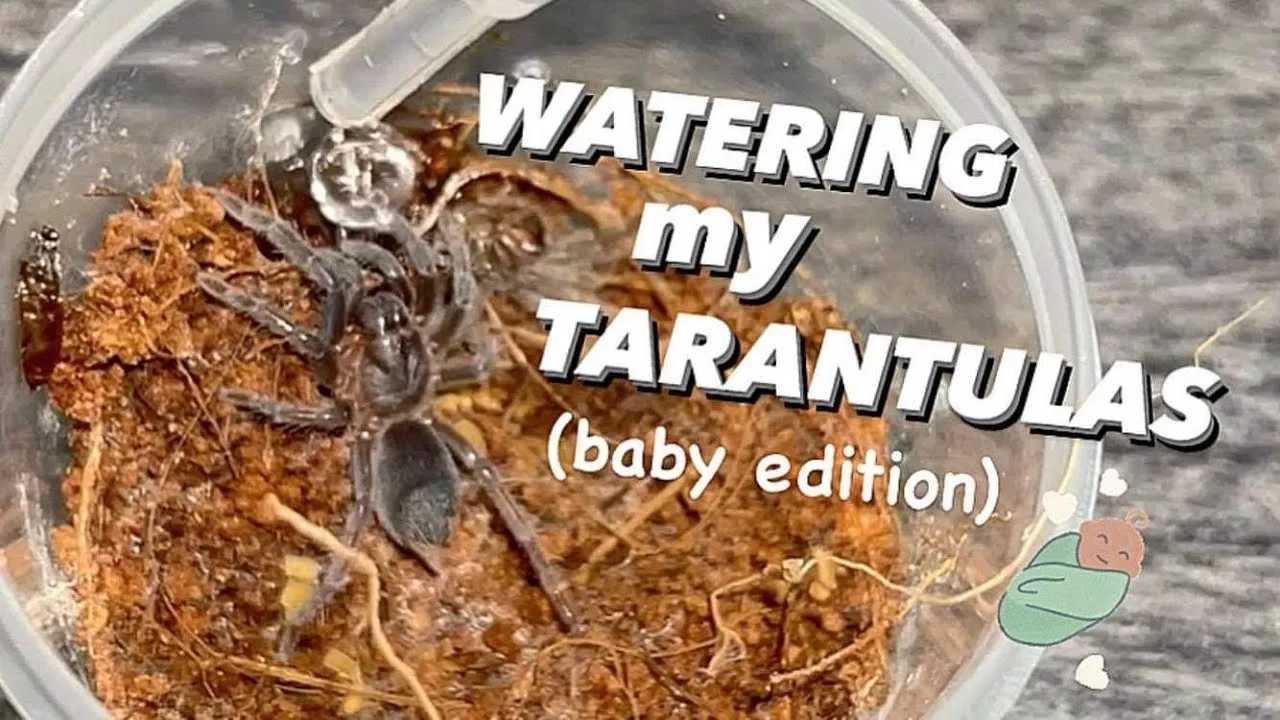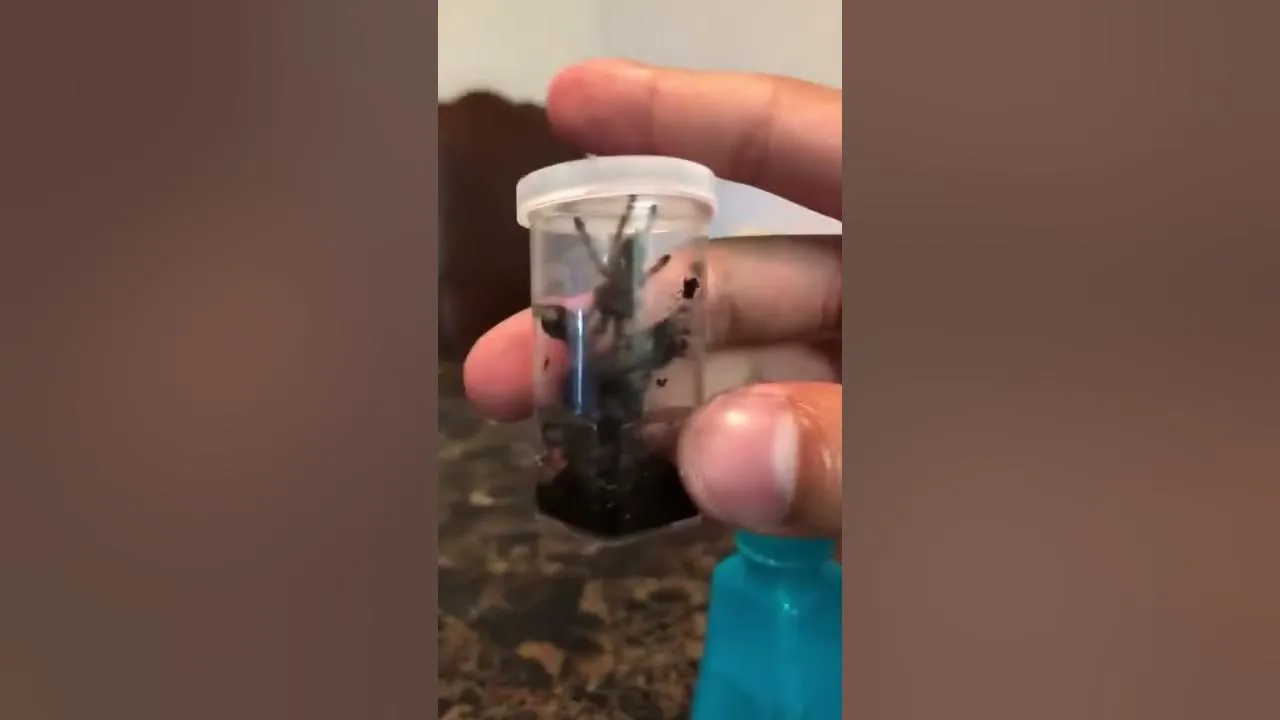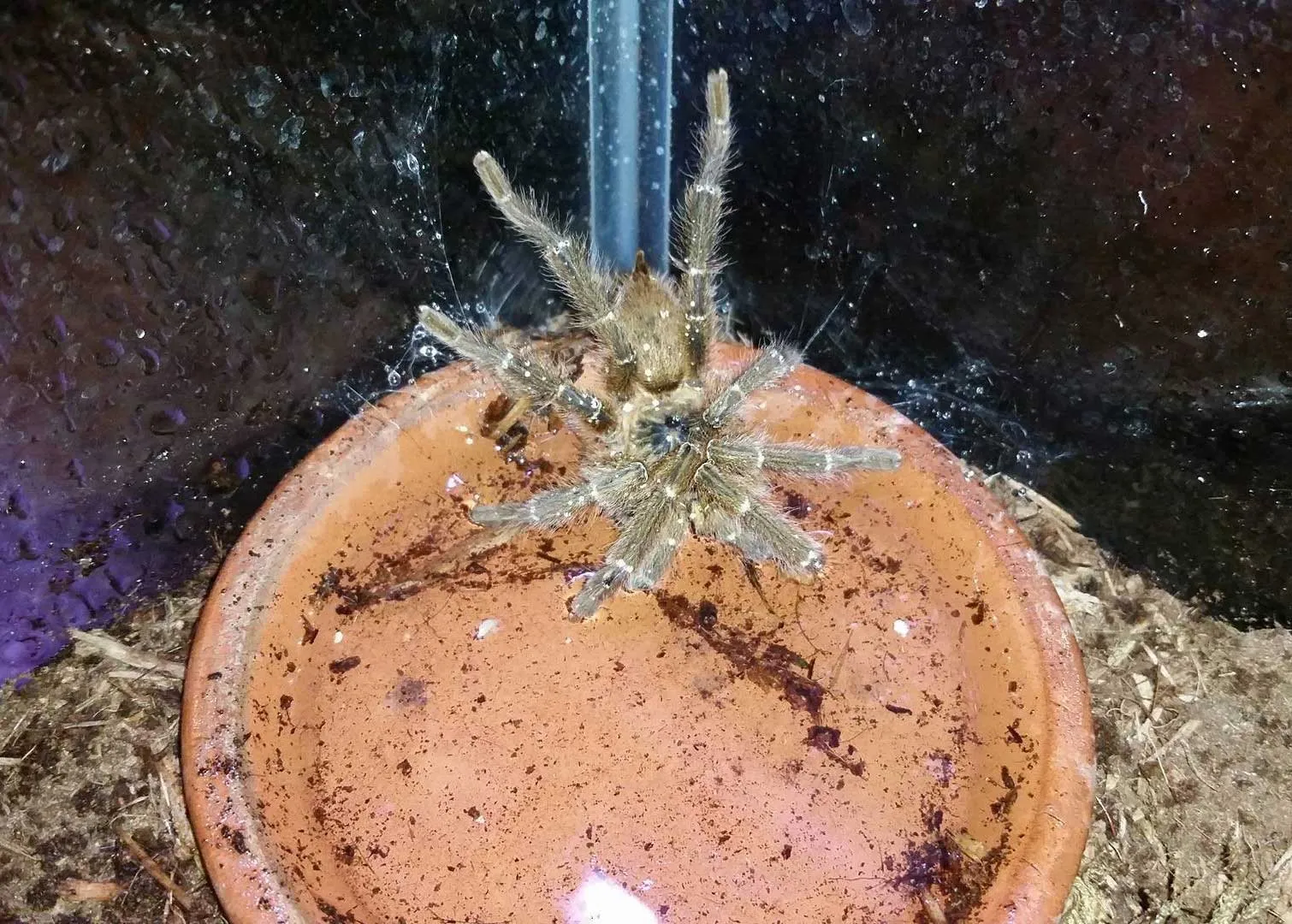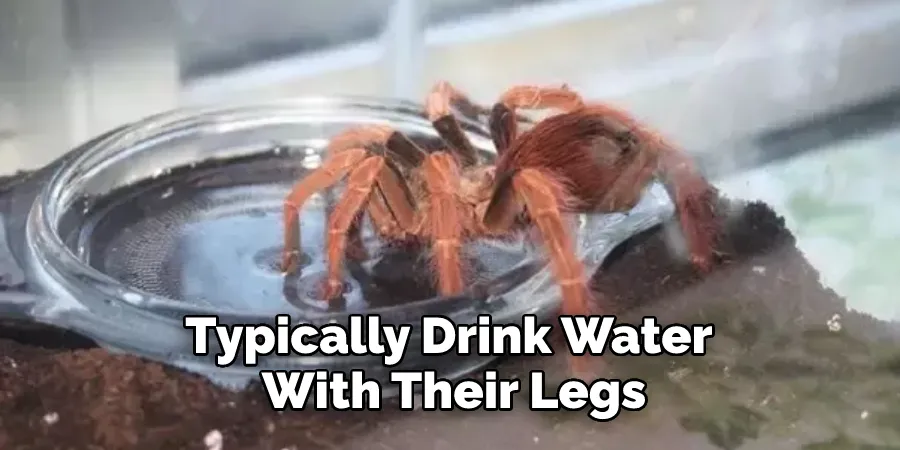Why Is Water Important for Tarantulas
Water is absolutely critical for the survival and well-being of your tarantula. Just like humans and other animals, tarantulas need water to stay hydrated, maintain essential bodily functions, and molt successfully. Without adequate hydration, your tarantula can quickly become dehydrated, leading to serious health problems and even death. Providing a constant source of fresh water is a fundamental aspect of responsible tarantula care, ensuring your pet thrives in its enclosure. Understanding the importance of water is the first step in providing the best possible care for your arachnid companion. This article will provide you with the best practices and tips to keep your tarantula hydrated and healthy, starting with the basic needs of your pet.
Dehydration Dangers in Tarantulas
Dehydration in tarantulas can be a serious threat, leading to a range of health issues that can compromise their well-being. The dangers of dehydration include difficulty molting, lethargy, and even death. When a tarantula is dehydrated, its exoskeleton can become hard and inflexible, making it extremely difficult for the spider to shed its old skin. This can lead to a failed molt, which is often fatal. Additionally, dehydrated tarantulas often become sluggish and inactive, displaying a lack of appetite and a general decline in health. In severe cases, dehydration can cause organ failure and ultimately lead to the death of the tarantula. Therefore, recognizing the signs of dehydration and implementing proper hydration techniques are crucial for keeping your tarantula healthy and thriving.
Identifying Dehydration Signs

Recognizing the signs of dehydration in your tarantula is key to providing timely and effective care. Common indicators of dehydration include a wrinkled abdomen, a lack of appetite, and lethargy. A tarantula that appears shrunken or has a noticeably wrinkled abdomen may be suffering from dehydration, as the spider’s body loses fluids and its tissues contract. Furthermore, a dehydrated tarantula may refuse to eat, displaying a disinterest in its usual food. The spider might also become less active, spending more time hiding or remaining still. It is also important to observe the tarantula’s behavior during molting. If the spider is having difficulty shedding its skin, this could indicate dehydration. By carefully monitoring your tarantula and recognizing these telltale signs, you can quickly intervene and provide the necessary hydration to ensure your pet’s health and longevity.
Watering Your Tarantula Top 5 Tips
Providing water for your tarantula is a straightforward process, but following the right techniques is essential for ensuring your pet’s health. Here are the top 5 tips to hydrate your tarantula and keep it thriving. These tips cover everything from providing a water dish to misting the enclosure, ensuring that your tarantula has consistent access to the water it needs. By following these simple steps, you can create an optimal environment that supports your spider’s well-being. With this guide, you’ll be well-equipped to keep your tarantula hydrated and happy, allowing it to flourish in its environment.
Provide a Water Dish
A water dish is a fundamental element of a tarantula’s enclosure and provides a constant source of fresh water. The water dish should be shallow enough to prevent the tarantula from drowning but deep enough to allow easy access to water. It’s important to use a dish that is stable and cannot be easily tipped over, as this could spill the water and deprive your tarantula of its water source. Place the water dish in a location where the tarantula can easily find it. Regularly check the water dish and refill it with fresh, clean water. This ensures the tarantula has access to uncontaminated water at all times. Choosing and maintaining the right water dish will help in keeping your tarantula hydrated and healthy.
Choosing the Right Water Dish

Selecting the right water dish for your tarantula is a crucial aspect of its care. The ideal water dish should be shallow, stable, and made of a non-toxic material. Small, shallow dishes specifically designed for reptiles or insects work well, as they are unlikely to tip over and provide easy access for your tarantula. Avoid using dishes with sharp edges or made of materials that could be harmful to your pet. The size of the dish should be proportional to the size of your tarantula; a juvenile spider needs a smaller dish than a fully grown adult. The dish’s placement should be considered too; position it in a secure spot within the enclosure, away from direct heat sources to prevent rapid water evaporation.
Water Dish Maintenance
Regular water dish maintenance is essential for your tarantula’s health. Water dishes should be cleaned and refilled frequently, ideally every day or every other day, to ensure the water remains fresh and free of contaminants. Remove any debris, such as substrate or food particles, from the dish as soon as possible. Wash the dish with warm water and soap, making sure to rinse it thoroughly to remove all traces of soap. Avoid using harsh chemicals or cleaning agents, as these can be toxic to your tarantula. Place the clean dish back in the enclosure with fresh, clean water. Consistent maintenance of the water dish helps prevent bacterial growth and ensures your tarantula always has access to safe, potable water. This maintenance will significantly improve your tarantula’s overall health and well-being.
Misting Your Tarantula
Misting the enclosure provides an additional source of hydration and helps maintain humidity levels, which are crucial for tarantulas. Many tarantulas, particularly those from humid environments, benefit from occasional misting. However, misting frequency depends on the species of tarantula and the humidity levels in the enclosure. This method simulates natural rainfall and can encourage drinking behavior in some tarantula species. Misting also helps maintain optimal humidity, which is particularly important during molting, to prevent the exoskeleton from drying out. Proper misting techniques help ensure your tarantula stays hydrated, especially for those species that require a higher humidity level.
When to Mist

The frequency of misting your tarantula’s enclosure depends on the species of the spider and the humidity levels in the environment. Tarantulas that thrive in humid environments may need misting once or twice a week, while those from drier habitats may only need misting occasionally. Observe the humidity levels using a hygrometer to determine the appropriate misting schedule. In addition to the species and humidity levels, consider the time of day. Misting in the morning can help simulate natural conditions and provide the tarantula with moisture throughout the day. Avoid misting too frequently, as excessive humidity can lead to mold growth and other issues within the enclosure. Always tailor your misting schedule to the specific needs of your tarantula.
How to Mist
When misting your tarantula’s enclosure, use a fine mist spray bottle filled with clean, dechlorinated water. Aim the mist over the substrate and the sides of the enclosure rather than directly at the tarantula. This helps to create a humid environment without soaking the spider. Avoid over-misting, as excess moisture can lead to mold growth and other problems. The goal is to lightly moisten the substrate and the enclosure walls, allowing the tarantula to drink water droplets that form. Ensure the water is at room temperature to avoid shocking the spider with sudden temperature changes. Regularly clean and maintain your misting bottle to prevent the buildup of bacteria and ensure the water remains clean and safe for your pet.
Providing Humidity
Humidity is a critical environmental factor for tarantulas, as it helps them stay hydrated and facilitates healthy molting. Many tarantula species, particularly those from tropical or subtropical regions, require a specific level of humidity to thrive. The correct humidity level will vary depending on the tarantula species. The substrate within the enclosure plays a vital role in maintaining humidity. Choosing the right substrate and ensuring it remains slightly moist can help create the necessary humid environment for your tarantula.
Humidity Levels

The ideal humidity level for a tarantula varies depending on its species. Tropical tarantulas often need humidity levels between 70% and 80%, while those from drier climates may require levels closer to 50% to 60%. Research the specific humidity requirements of your tarantula species to ensure you are providing the best environment. A hygrometer can measure the humidity level in the enclosure, allowing you to monitor and adjust the environment as needed. Regularly check the humidity levels and adjust your misting and ventilation strategies to maintain the appropriate range. Providing the right humidity is essential for promoting healthy molting and overall well-being.
Monitoring Humidity
Monitoring the humidity in your tarantula’s enclosure is crucial for maintaining optimal conditions. A hygrometer is an essential tool for measuring humidity levels. Place the hygrometer inside the enclosure, away from direct misting or water sources, to get an accurate reading. Regularly check the hygrometer to track the humidity levels and make necessary adjustments to the environment. If the humidity is too low, increase misting frequency or add more water to the substrate. If the humidity is too high, improve ventilation within the enclosure. By consistently monitoring and adjusting the humidity levels, you can create a suitable environment that promotes the health and well-being of your tarantula.
Watering Frequency
The frequency of watering your tarantula depends on several factors, including the species, its size, the enclosure’s environment, and the tarantula’s individual needs. Generally, a water dish should be refilled daily or every other day to ensure a constant supply of fresh water. Misting frequency should be adjusted based on humidity levels and the tarantula’s specific requirements. It’s also important to consider the time of year and the temperature. During warmer months, tarantulas may need more frequent watering, as water evaporates more quickly. By paying attention to these factors, you can provide your tarantula with an optimal hydration schedule and keep it healthy and happy.
Factors Affecting Watering Frequency

Several factors influence how often you should water your tarantula. The species of the tarantula is a primary consideration, as different species have varying humidity requirements. The size and age of the tarantula also play a role, with juvenile spiders typically needing more frequent hydration than adults. The enclosure environment, including the substrate type, ventilation, and ambient temperature, impacts how quickly the water evaporates and the humidity levels. Warmer temperatures and drier environments will necessitate more frequent watering. Furthermore, observe your tarantula’s behavior. A dehydrated tarantula will show signs, such as a wrinkled abdomen. By considering all these factors, you can create a hydration schedule that suits your tarantula’s needs.
Adjusting to Your Tarantula’s Needs
Each tarantula is unique, and it’s essential to adjust the hydration routine based on your pet’s individual needs. Observe your tarantula’s behavior, activity levels, and overall health. If you notice signs of dehydration, such as a wrinkled abdomen or lethargy, increase the frequency of watering or misting. Conversely, if you observe mold growth or excessive humidity in the enclosure, decrease the watering frequency and improve ventilation. Regularly monitor the humidity levels using a hygrometer and adjust accordingly. It’s important to tailor the hydration schedule to suit your tarantula’s specific requirements, which may change over time. By paying close attention and making the necessary adjustments, you can help your tarantula thrive.
Hydration Myths Debunked
There are several myths surrounding tarantula hydration. One common myth is that tarantulas can get all the water they need from their food. While food does contain some moisture, it is not a sufficient source of hydration, and a dedicated water source is still essential. Another myth suggests that misting directly on the tarantula is the best way to hydrate it. This is generally not recommended as it can stress the spider and potentially cause issues. The most reliable approach is to provide a water dish and, if necessary, mist the enclosure to maintain humidity. Understanding and debunking these myths is crucial for providing proper hydration and avoiding potential harm to your pet. By relying on accurate information, you can create a safe and healthy environment for your tarantula.
